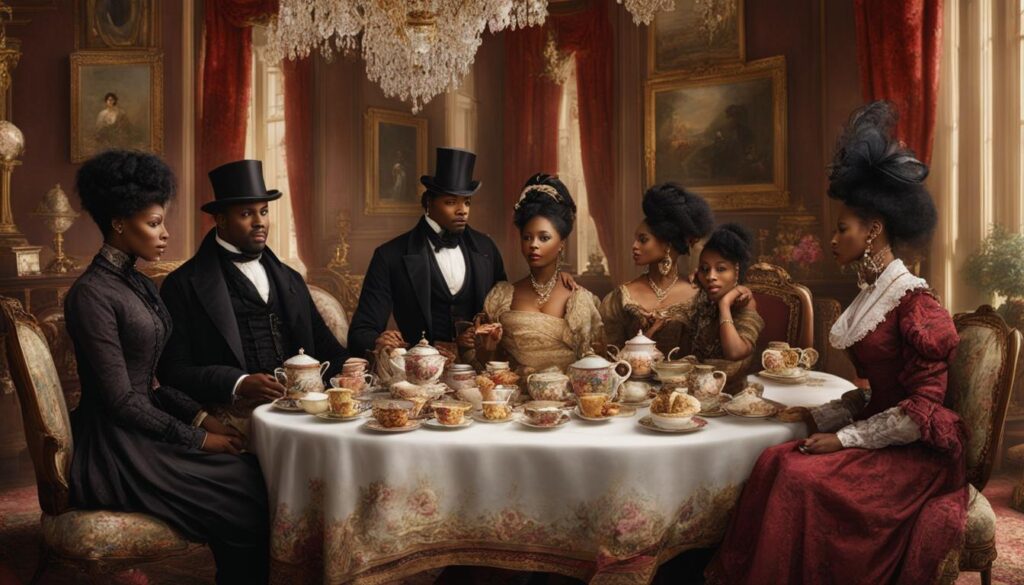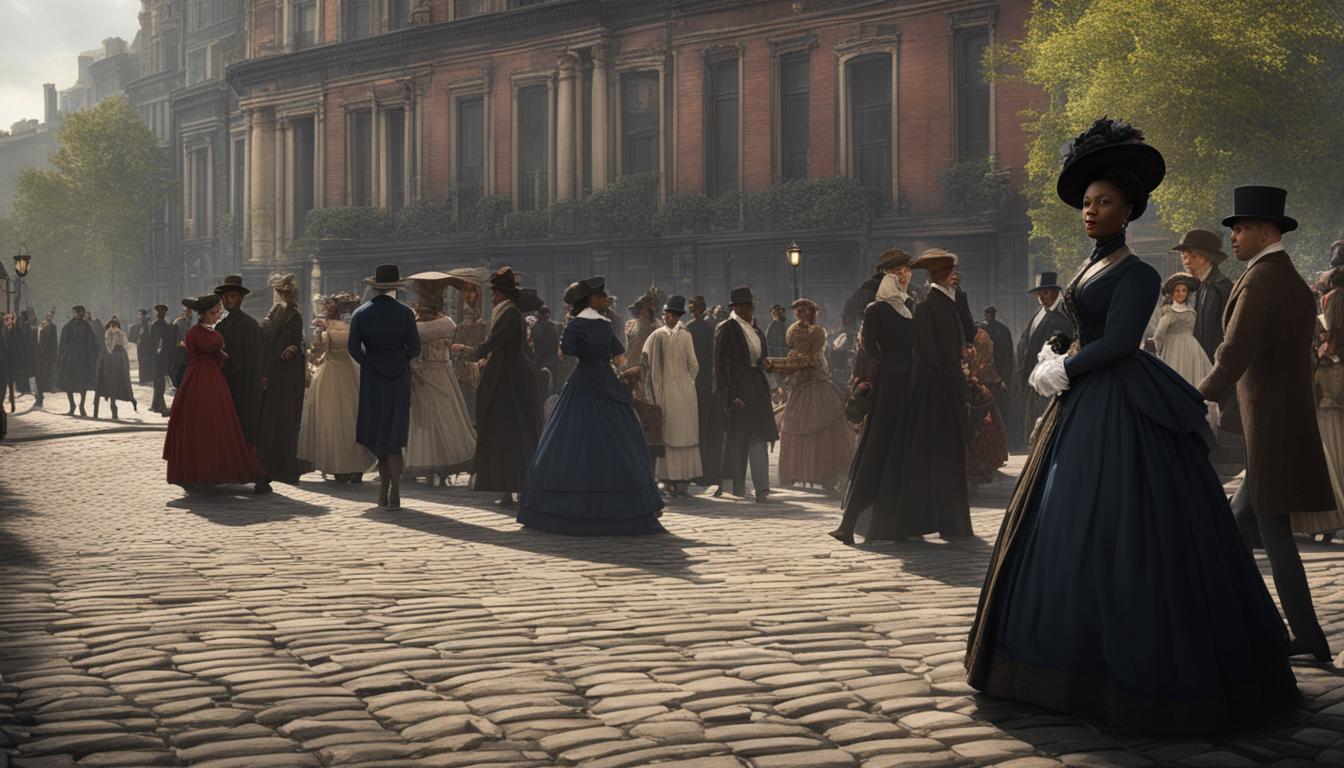As a society, we tend to overlook the narratives of marginalized communities, dismissing them as irrelevant to the larger history. However, these narratives are crucial to comprehend the historical context fully. In “Black Victorians, Black Victoriana” by Gretchen Holbrook Gerzina, we are presented with the often-ignored stories of African presence in Victorian Britain. This book summary will explore the primary themes discussed in the book, from the challenges faced by Black Victorians to their significant contributions to society and the arts. Through understanding their experiences, we can gain a deeper understanding of Victorian Britain and its legacy today.
Introduction to “Black Victorians, Black Victoriana”
“Black Victorians, Black Victoriana” by Gretchen Holbrook Gerzina is a groundbreaking book that sheds light on the often-overlooked African presence in Victorian Britain. This book is a significant addition to the historical discourse on the era, unveiling narratives that have long been omitted from mainstream discussions.
The importance of understanding the African presence in Victorian Britain cannot be overstated. The book brings attention to the vast range of roles in which Black people found themselves in Victorian society – be it as servants, soldiers, scholars, activists, or artists, to name a few.
This introductory section lays down the foundation for the following sections, which delve deeper into various aspects of the lived experiences of Black Victorians. The following sections explore the historical context of Victorian Britain, Africans in Victorian society, Black women in Victorian Britain, representation in art and literature, activism and resistance, the legacy and impact of Black Victorians, and key themes of “Black Victorians, Black Victoriana”.
Historical Context of Victorian Britain
The Victorian era in Britain spanned from 1837 to 1901, under the reign of Queen Victoria. It was a time of significant industrial and technological growth, as well as political and social changes. As Britain continued its expansion as a world power, its population grew, and so did its economy. The development of the railway system helped connect different parts of the country, leading to easier transportation of people and goods. These changes facilitated the growth of cities, causing large-scale urbanization.
Victorian Britain was also characterized by a class-based society, with the upper class controlling most of the country’s wealth and land. The working-class population faced poor living conditions, long working hours, and low wages. The middle class benefitted from the country’s economic growth, many of whom were involved in trade and manufacturing.
The Victorian era saw significant developments in science, medicine, and art. The study of natural history and the growth of museums contributed to scientific knowledge. Medical advancements, such as anesthesia and antiseptics, revolutionized healthcare. Victorian Britain was also a time of artistic and literary expression, with prominent figures such as Charles Dickens and the Pre-Raphaelites.
Understanding the historical context of Victorian Britain is crucial to comprehending the experiences of Black Victorians during this time.
“History is not a burden on the memory but an illumination of the soul.” – John Dalberg-Acton
Africans in Victorian Society
During the Victorian era, Africans living in Britain faced various challenges that stemmed from deep-seated prejudices and stereotypes. Nonetheless, they played important roles in society and left a lasting impact on Victorian Britain.
Most Africans living in Victorian Britain came from former colonies such as the West Indies, Africa, and India. They were divided into different social classes and occupations, with some working as servants, laborers, and soldiers. Despite their contributions to society, they often faced discrimination and racism in their daily lives.
“The lot of the black man in London is not a happy one; for however well he may conduct himself, he still meets with a degree of prejudice which more often than not embitters him.” – Ida B. Wells-Barnett
Despite these challenges, some Africans managed to establish themselves as businesspeople, musicians, actors, and writers. For example, Ira Aldridge, an African American actor, achieved great success on the London stage.
“My profession is to be a colored tragedian, then let me be judged as a tragedian…not as a colored man.” – Ira Aldridge
The presence of Africans in Victorian society challenged prevailing notions of race and identity and forced people to reconsider their prejudices. Many Africans also worked towards creating a more inclusive and tolerant society in Britain through various forms of activism and resistance, as we will explore in Section 7.
Black Women in Victorian Britain
Black women in Victorian Britain faced unique challenges due to their race and gender. Their experiences were often shaped by societal attitudes, discrimination, and limited opportunities for education and employment.
Despite these obstacles, Black women made significant contributions to Victorian society. For example, Mary Prince, a Black woman born into slavery, became a prominent abolitionist after gaining her freedom. She published a book, The History of Mary Prince, a West Indian Slave, which shed light on the horrors of slavery and helped galvanize the abolitionist movement.
Another notable figure was Sarah Forbes Bonetta, a Yoruba princess who was captured and sold into slavery before being rescued by a British naval captain. She became a protege of Queen Victoria and received a formal education before marrying a Nigerian businessman and returning to Africa.
The experiences of Black women in Victorian Britain were also reflected in the arts. For example, Black actresses like Ira Aldridge and Mary Seacole challenged societal norms and paved the way for future generations of performers.
“Black women played an important role in shaping Victorian Britain, despite facing significant challenges due to their race and gender.”
Representation in Art and Literature
The representation of Black Victorians in art and literature offers valuable insights into societal attitudes of the time. Artists and writers often portrayed Black Victorians as exotic and foreign, reinforcing the notion of a racial hierarchy with white Europeans at the top. Many of these works perpetuated harmful stereotypes and myths about Black people.
However, there were also instances where Black Victorians were portrayed with nuance and depth, challenging prevalent prejudices. One example is the novel “The Woman in White” by Wilkie Collins, which features a Black housekeeper named Jane. Though she is initially described in stereotypical terms, as the story progresses, her character becomes more complex and sympathetic.
Black Victorians also made significant contributions to the arts. One notable figure is Sarah Forbes Bonetta, a West African princess who was brought to England and presented as a gift to Queen Victoria. Despite facing racism and discrimination, Bonetta became a talented musician and artist, exhibiting her work at the Royal Horticultural Society.
“The portrayal of Black Victorians in art and literature reflects the societal attitudes of the time. Despite harmful stereotypes, Black Victorians also served as subjects and creators of important works, challenging prejudices and shaping our understanding of Victorian Britain.”
Activism and Resistance
Black Victorians faced significant challenges to achieve equality and justice in Victorian Britain. However, many individuals and organizations rose to the task and engaged in activism and resistance movements, paving the way for future generations.
The Anti-Slavery Society was one such organization that played an instrumental role in the fight against slavery and racial inequality. Founded in 1823, the society was comprised of both white and black members, and it held talks, rallies, and published leaflets to raise awareness of the atrocities of slavery.
The African Association, established in 1897, was another critical organization focused on bringing attention to the plight of Black Africans. With John Alcindor as its secretary, the Association sought to advocate for the rights of Africans in the British Empire and beyond, hosting lectures and debates where they could share their perspectives.
“The greatest ignorance that exists anywhere in the world today is the ignorance about Africa.”
-Marcus Garvey
The advocacy of Black Victorians did not go unnoticed; their voices grew stronger, and their demonstrations gained magnitude. Several individuals emerged as key figures in the movement, including Ida B. Wells, who campaigned against lynching in the US, and Mary Seacole, a nurse who provided care for soldiers during the Crimean War.
The fight for equality and justice was not won overnight, and it was not without sacrifice. However, the unwavering determination, courage, and fortitude of Black Victorians paved the way for social justice and freedom that we enjoy today.
Legacy and Impact
The legacy of the Black Victorians has left a profound impact on Victorian Britain and beyond. Their contributions to society have proven invaluable, from art and literature to activism and resistance.
In art and literature, Black Victorians have had a significant impact on representation and diversity. Through their presence, they challenged societal norms and expanded the understanding of what it meant to be British. The contributions of Black Victorians to the arts continue to inspire and influence contemporary artists and writers.
“[The Black Victorians’] impact is wide and profound, visible in the arts, in civic and political movements, in a sense of a historical past reclaimed, and in the changed understanding of their place in Western civilization. They remind us of the multiplicity of voices and narratives that make up a people’s past.”
In activism and resistance, Black Victorians paved the way for future advancements in civil rights. Their advocacy and perseverance in the face of adversity have had a lasting impact on the fight for equality and justice. From Mary Seacole to Ida B. Wells, their stories serve as a source of inspiration for future generations.
Overall, the legacy and impact of the Black Victorians highlight the importance of including diverse perspectives in our understanding of history. Their stories have paved the way for a more inclusive and equitable society, and their contributions continue to inspire and influence generations to come.
Key Themes Explored in “Black Victorians, Black Victoriana”
Gretchen Holbrook Gerzina’s “Black Victorians, Black Victoriana” explores a wide range of themes related to the African presence in Victorian Britain. Throughout the book, Gerzina sheds light on the experiences of Black Victorians and their impact on the broader social and cultural landscape of the era.
The Importance of Representation
One of the key themes of “Black Victorians, Black Victoriana” is the importance of representation. Gerzina argues that the exclusion of Black figures from historical narratives has led to a distorted view of Victorian Britain. By highlighting the achievements and struggles of Black Victorians, Gerzina seeks to provide a more accurate and complete picture of the era.
The Intersection of Race and Gender
Another important theme explored in the book is the intersection of race and gender. Gerzina focuses on the experiences of Black women in particular, examining the unique challenges they faced and the ways in which they navigated Victorian society.
Activism and Resistance
“Black Victorians, Black Victoriana” also delves into the activism and resistance movements carried out by Black Victorians. Gerzina highlights the important individuals and organizations that worked towards social and political change, demonstrating the impact that these movements had on Victorian Britain and beyond.
The Legacy of Black Victorians
Finally, the book explores the lasting legacy of Black Victorians and their impact on contemporary culture. From the arts to politics, Gerzina demonstrates how the contributions of Black Victorians continue to shape our world today.

Conclusion
In conclusion, “Black Victorians, Black Victoriana” by Gretchen Holbrook Gerzina sheds light on the often overlooked narratives of African presence in Victorian Britain. Through exploring the experiences of Black Victorians, we gain a deeper understanding of the diverse and complex societal landscape of this era.
This book highlights the significant contributions made by Black Victorians to various aspects of British society and culture. Furthermore, it emphasizes the importance of diverse representation in history and the arts.
By recognizing and celebrating the legacies of the Black Victorians, we can better understand the ongoing fight for equality and justice that continues today. The impact of their contributions can still be felt, and their stories deserve to be told and remembered.
Overall, “Black Victorians, Black Victoriana” is a crucial and compelling addition to the study of Victorian Britain, and it serves as an important reminder of the necessity of diverse representation in historical scholarship and storytelling.



